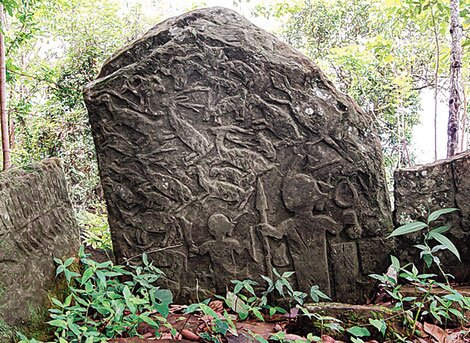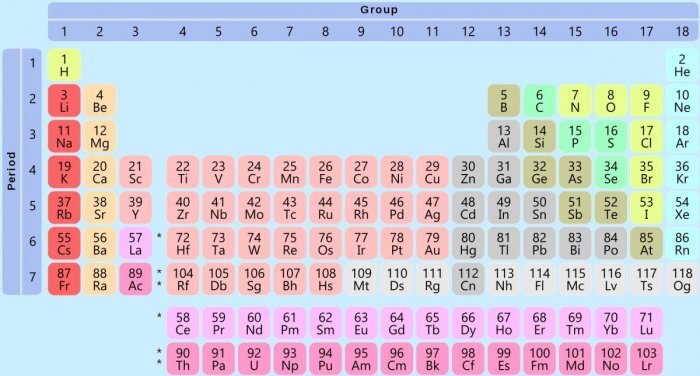Indian Heritage & Culture
Mahamastakabhisheka Celebrations
Recently, the 10-day long Mahamastakabhisheka for the monolith 39-foot high Bahubali statue started in Dharmasthala, Karnataka.
- This year (2019), Mahamastakabhisheka Mahotsava will be observed from February 9 to February 18.
- This is the fourth mahamastakabhisheka of Lord Bahubali since its installation in 1982. Earlier were performed in 1982, 1995, and in 2007 in Dharmasthala.
- It was sculpted by Renjala Gopalakrishna Shenoy under the aegis of Ratnavarma Heggade in 1973. It was then positioned atop Ratnagiri Hill in the temple town of Dharmasthala in 1982.
Note:
- In 2018, the anointing ceremony of the Gomateshwara Bahubali statue at Shravanabelagola took place from February 17 to February 25.
- The statue at Shravanabelagola is believed to be one of the largest free-standing statues in the world (at 57 feet), which was built in 983 AD by the minister of the Ganga dynasty, Chamunda-Raya.
Mahamastakabhisheka
- The word Mahamastakabhisheka is a combination of three words viz: Maha (great), Masthaka (head) and Abhisheka (anointing) which literally means ‘the head anointing ceremony’.
- The ceremony is called Mahamastakabhisheka (also referred as Grand Consecration) and not Mastakabhisheka because the ceremony is performed only once in 12 years.
- The Mahamastakabhisheka Mahotsava is an anointing ceremony of the statue of Lord Bahubali.
Lord Bahubali
- Lord Bahubali was the son of lord Rishabhanatha who was the first of the 24 Jain Tirthankaras.
- Jain mythology holds up Bahubali as the one who succeeded in attaining liberty from worldly desires through a long period of sustained meditation.
- The sculpture of Lord Bahubali is in upright posture of meditation known as Kayotsarga which stands for renunciation, self-control and subjugation of the ego as a reflection of his life.
- This is the digambara form of Bahubali which represents complete victory over earthly desires and needs, which forms the edifice for spiritual ascent towards divinity.
Jainism
- The most famous thinker of the Jainas, Vardhamana Mahavira was born in 540 B.C. in Kundagram village near Vaishali. He was a Kshatriya prince belonging to the Lichchhavi clan.
- According to the beliefs of the Jain tradition, Mahavir was the 24th Tirthankara, who succeeded the 23rd Tirthankara, Parshvanatha.
- Tirthankara is a Sanskrit word meaning 'Fordmaker', i.e., one who is able to ford the river, to cross beyond the perpetual flow of earthly life.
- Mahavir attained ‘kaivalya’ or omniscience at the age of 42.
- He passed away at the age of 72 at a place called Pavapuri, near modern day Rajgir (in Bihar) after preaching for thirty years.
- Jainism attaches utmost importance to ahimsa or non-violence. It preaches 5 mahavratas (the 5 great vows):
- Ahimsa (Non-violence)
- Satya (Truth)
- Asteya or Achaurya (Non-stealing)
- Brahmacharya (Celibacy/Chastity)
- Aparigraha (Non-attachment/Non-possession)
- The three jewels or triratna of Jainism include Samyak Darshana (right faith), Samyak Gyana (right knowledge) and Samyak Charitra (right conduct).
- Jainism is a religion of self-help. There are no gods or spiritual beings that will help human beings. It does not condemn the varna system.
- The texts containing the teachings of Mahavira are called the Agamas.
- In later times, it got divided into two sects: Shvetambaras (white-clad) under Sthalabahu and Digambaras (sky-clad) under the leadership of Bhadrabahu.
Science & Technology
150 years of the Periodic Table
The United Nations has designated 2019 as the International Year of the Periodic Table (IYPT2019) to commemorate the 150th anniversary of the establishment of the Periodic Table of Chemical Elements by Dmitri Ivanovich Mendeleev on 17th February 1869.
- The International Year aims to recognize the importance of the Periodic Table of Chemical Elements as one of the most important and influential achievements in modern science reflecting the essence not only of chemistry but also of physics, biology and other basic sciences disciplines.
- The initiative for IYPT2019 is supported by the International Union of Pure Applied Chemistry (IUPAC) in partnership with other science-related organization.
- Mendeleev was not the first one to create a table of elements. Earliest of such efforts was due to the father of modern chemistry, Antoine Lavoisier in 1789 who classified them in terms of their properties.
- John Newlands introduced the concept of octaves in chemistry, wherein properties repeat for every eighth element.
- In comparison to the modern periodic table, Mendeleev's periodic table was designed in the order of increasing atomic weight while the modern periodic table is designed according to increasing atomic number.
Important Facts about Periodic Table
- There are 118 confirmed elements in the periodic table. Among those, 90 elements can be found in nature, others are strictly man-made. Technetium was the first man-made element.
- Hydrogen is the lightest element with its atomic weight 1. Uranium is the heaviest element with an atomic weight of 238.
- Helium, neon, argon, krypton, xenon, and radon are known as the Noble Gases as they were believed to be unreactive. But recent studies have shown reactive compounds of xenon, krypton, and radon.
- The IUPAC is responsible for maintaining the periodic table.
- Most of the elements on the periodic table are metals (almost 75 percent).
- Different forms of pure elements are called allotropes. For example, diamond, graphite, buckminsterfullerene, and amorphous carbon are allotropes of Carbon.
- The only two elements that are liquid in room temperature are mercury and bromine.
The International Union of Pure and Applied Chemistry (IUPAC)
- IUPAC is the world authority on chemical nomenclature and terminology, including the naming of new elements in the periodic table; on standardized methods for measurement; and on atomic weights etc.
- A neutral and objective scientific organization, IUPAC was established in 1919 by academic and industrial chemists who shared a common goal – to unite a fragmented, global chemistry community for the advancement of the chemical sciences via collaboration and the free exchange of scientific information.
- Four new elements discovered in 2015 have been named by the International Union of Pure and Applied Chemistry (IUPAC).
- These are Nihonium (113Nh), Moscovium (115Mo), Tennessine (117Te) and Oganesson (118Og).
- Of these elements, Nh-278 is highly radioactive with a very short half-life of 0.24 milliseconds.
Indian History
Kawtchhuah Ropui Heritage Site, Mizoram
Archaeological survey of India has discovered traces of ancient civilization in Vangchhia, a village in Mizoram’s Champhai district bordering Myanmar.
- The site has been named as the Kawtchhuah Ropui heritage site. Kawtchhuah Ropui means the Great Entranceway.
- Kawtchhuah Ropuithe heritage site is Mizoram’s first site which is under the protected monuments of Archaeological Survey of India’s (ASI).
- The area is part of the Lower Himalayas and has rows of steep hills largely made up of various kinds of sandstone shading from light grey to blackish.
- The site, measuring about 45 sq km has yielded pictographs etched on large stone slabs, menhirs (large standing stones), a necropolis (a large cemetery), a water pavilion among other artifacts.
- The ancient people of Vangchhia also carved terraces on rocks for their settlement — the main excavated site consists of 15 such terraces.
- There are over 100 menhirs, rising almost 15 feet tall, stand at the excavation site depicting floral, animal and humans.
- Water pavilion has strategically drilled holes — between one foot and one meter across — spread over several sandstone slopes and used for storing water.
- ASI has not been able to accurately date the Vangchhia settlement. Initially, ASI estimated
site to be from the 15th century. - However, recently, the ASI team has also discovered neolithic caves near Vangchhia, indicating that the lost civilization could be much older.
Important Facts For Prelims
Important Facts for Prelims (11th February 2019)
PETROTECH - 2019
- PETROTECH-2019, considered to be India’s flagship hydrocarbon conference is being organised at India Expo Centre, Greater Noida, Uttar Pradesh under the aegis of the Ministry of Petroleum & Natural Gas, Government of India.
- This is the 13th edition with the theme of - ‘Shaping the New Energy World through Innovation and Collaboration’.
- PETROTECH is a biennial platform for national and international experts in the oil & gas industry to exchange views and share knowledge, expertise, and experiences.
Mobile-App e-Cocoon
- Recently Ministry of Textiles launched a mobile application e-cocoon for quality certification in silkworm seed sector.
- Mobile app e-cocoon will help quality certification in silk worm sector as it will be used by the Seed Analysts and Seed Officers nominated under Central Seed Act for system and product certification through real time reporting.
- India has the unique distinction of being the only country producing all the five known commercial silks -Mulberry, Tropical Tasar, Oak Tasar, Eri and Muga.
- Mulberry Silk is produced mainly in Karnataka, Andhra Pradesh, Assam, Tamil Nadu, Jammu and Kashmir, Jharkhand and West Bengal.
- Non-Mulberry Silk or Vanya Silk (Tasar, Eri and Muga) is produced in Odisha, Chhattisgarh and North-Eastern States.
- North East is the only region that produces four varieties of silk -Mulberry, Oak Tasar, Muga and Eri.
- India is the second largest producer of silk after China and the largest consumer of silk.
Wind-Rush Scheme
- More than 450 Indians have been confirmed their British citizenship under the British government's ‘Windrush Scheme’.
- Under the Windrush Scheme, citizenship has been granted to immigrants from Commonwealth countries to the UK, who arrived or settled in the UK before 1 January 1973 and have been continuously resident in the UK since their arrival.
- The 'Windrush Generation' refers to citizens of former British colonies who arrived in the the UK before 1973, when the rights of such Commonwealth citizens to live and work in Britain was substantially curtailed.
- While a large proportion of them were of Jamaican/Caribbean descent, they also included Indians and other South Asians.
- The immigrants referred to under the bracket of 'Windrush Generation' relates to a ship named 'Windrush', which brought Jamaican workers to the UK shores in 1948.





